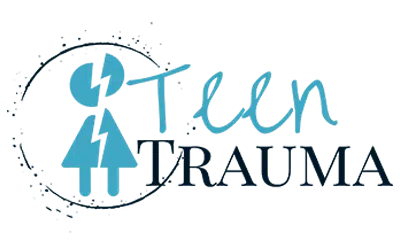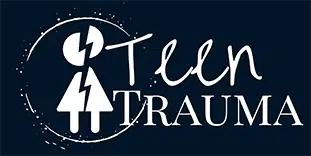Cyberbullying a Life Threatening Traumatic Event?
When a teenager suffers a traumatic event, they are at a high risk for developing post traumatic stress disorder, or PTSD. Cyberbullying is one of the types of traumatic events that can cause a teenager to develop PTSD. The rise in the number of social media channels available to today’s teenagers makes online bullying an even higher risk.
Here is a looks at how cyberbullying has grown and why it puts a teen at risk for developing posttraumatic stress disorder. Teens who are cyberbullies are at very high risk of developing a mental health disorder due to the ongoing nature of this type of bullying.
What Is Cyberbullying?
Cyber bullying occurs when someone bullies another individual using online platforms or texting. This type of bullying can take many forms, including:
- Sending a threatening text or private messages
- Bullying through social media and chat rooms
- Talking badly about someone behind their back online
- Posting or sharing unflattering or even sexually-explicit pictures of someone without their consent
Any deliberate, persistent, and malicious use of works or pictures that takes place in an online environment that harms someone’s well-being or mental health is considered this form of bullying.
How Prevalent is Cyberbullying?
The increased screen time and online contact using social networking sites that came as a result of the COVID-19 pandemic have increased the risk of cyberbullying for today’s teenagers. According to research from Security.org, 21% of children between the ages of 10 and 18 have experienced cyberbullying, and 44% of all Internet users in America have experienced online harassment in some form. A rise in social media addiction among teenagers has created an increase in cyberbullying and the resulting post traumatic stress disorder.
Some high school students are at higher risk for cyberbullying than others. Risk factors include children who do not quite fit in, who are lower-income, who have disabilities, or who have a recent romantic breakup. Cyberbullies target those who are different or who they view as a threat to their own social standing.
Why Is Cyberbullying Such a Traumatic Event?
Bullying is not new, but cyberbullying takes bullying to a new level, and that is why an increasing number of teens are developing PTSD symptoms. Cyberbullying can be quite intense because of the vast number of people that can view or see the post or image. Unlike regular bullying, which can still be a traumatic experience but usually has an end, cyberbullying feels endless. Also, the Internet allows anonymity for bullies, and this encourages the behavior because it’s easier to “get away with it.”
Once content gets shared online, it is difficult to remove, so the bullying can continue for weeks and months, leaving the teen with a feeling of dread. Finally, teenagers cannot escape cyberbullies because of the ever-present nature of cell phones. Most states have laws that make this type of behavior illegal, but these cyberbullying laws can be difficult to enforce due to the challenge of spotting cyberbullying.
Spotting Post Traumatic Stress Disorder Symptoms in Your Teenager (And When to See a Mental Health Professional)
Unfortunately, laws about cyberbullying are difficult to enforce, and many teenagers are going to develop post traumatic stress disorder as a result. The key to helping teens who develop PTSD is two-fold. First, parents must be vigilant in protecting their teenagers from this type of abuse and teaching online safety.
Second, they must be able to spot signs that their child is struggling with a stress disorder PTSD symptoms. The signs of cyberbullying mirror those of any other traumatic event, like a death of a loved one or natural disaster. Some signs that a child is dealing with mental disorders which may be due to this type of bullying include:
- Sleep problems – If a teenager is suddenly not sleeping well, it can indicate they are being bullied.
- Depression – When a teenager is constantly in the line of sight of a bully, they are at high risk for developing clinical depression.
- Negative thoughts – Invasive thoughts that are out of character for the teen are a sign of PTSD.
- Angry outbursts – If a normally calm teenager is suddenly very angry all of the time, a mental health concern may be to blame.
- Substance abuse – Sudden and new substance abuse problems are a sign.
- Triggers – Fear triggers that create a stress response are a sign.
- Suicide – Teens who attempt suicide are suffering life threatening PTSD.
- School avoidance symptom – If your child suddenly will not go to school without a fight, they may be experiencing symptoms of post traumatic stress disorder.
If you notice these problems in your teenager, take them to a health care provider who can diagnose PTSD and get the right help in place. Keep in mind that any traumatic event can cause post traumatic stress disorder, but you need to discover where the problem lies for your teen. Also, if you suspect your teen is being bullied online and is struggling with stress disorder PTSD, take measures to stop the bullying or reduce online access to protect your child from further damage.
If the problem feels like your child’s life is at risk or you are noticing severe depression symptoms, consider a residential treatment facility. The sooner you can stop the bullying and get your child professional help, the better the outcome will be.
Parents, teachers, and others who work with teenagers need to understand the risk of PTSD for teenagers who are bullied through online platforms. This problem continues to grow, and decisive action is necessary to stop it. For parents, being aware of the problem and taking extreme measures to both keep their children from becoming bullies or being victims of bullies is vital as well.
Would you like to be part of the solution? Share the images below in your favorite social media platform!












